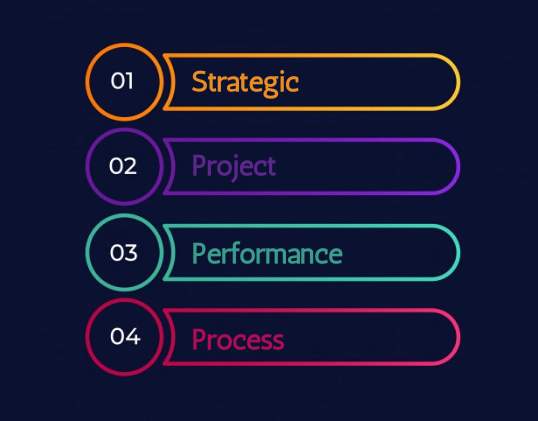Complete guide to understanding the role of benchmarking in Six Sigma
Benchmarking: What is it?
When you mention the word “benchmarking” how do ordinary people process it? Moreover, what’s “ordinary”? That sounds like a good subject for benchmarking.
Someone building a computer may think of microprocessors and memory modules. These metrics change when you want to get the fastest processor and reliable memory that you can afford. However, life gets easier when we turn to the benchmarking sites.
But alas, what do we find when we look deeply into the details? We see all sorts of irregularities. Different systems used for different memory modules.
Well, that means different buses and different processors, which can really skew the results. Not to mention differences in temperature on identical systems when you test several modules in a row.

The same happens to executives in their normal lives. A decision-maker that is unfamiliar with six-sigma needs to know what to do first. This dilemma is especially the case in start-ups and small companies ready to grow and be competitive on a larger scale.
Executives rely on their own experiences. Benchmarking gets confused with competitor analysis.
In competitor analysis, how can you find all of the critical details? Who will share these details? So, the executive committee performs an ad-hoc analysis.
Perhaps opinions are gathered from subject matter experts in the company. And even when you make critical decisions, you notice no improvements. Many companies fail at this point.
Now here comes the Six Sigma professional, that jack of all trades in the misunderstood world of Continuous Improvement. We know the deal; the right tools for the right job. Competitor analysis has its time and place, but that comes after a company’s processes are well-established.
So that’s where benchmarking comes in.
What is the Purpose of Benchmarking in Six Sigma?

Benchmarking is a method that companies use to compare the performance of their output to that of a standard. The process of benchmarking is performed as a Six-Sigma DMAIC project. During the measurement phase, the “company” benchmarks the “standard.”
The standard may be a compliance standard used in the business, or it may be an industry leader. For this discussion, the standard will be an industry leader. It’ll have similar outputs, but a different customer base.
The standard may be a vendor or a customer, but not a competitor. Outputs may be a process, a service, or a product.
Benchmarking is not competitor research that compares the performance of a competitor company to gain an advantage. It’s a process of comparing your processes with an industry leader to learn how to be better.
Benchmarking affords a competitive edge through the development of best practices. So it focuses on the best ways to meet customer needs.
Types of Benchmarking
Benchmarking comes in four types:

1. Strategic
This benchmark investigates how companies compete in the marketplace. The company and the standard may be from different industries. Albeit, the competitive positioning within an industry should be the same.
2. Project
This benchmark investigates techniques, such as project management and product introduction. Again, the company and the standard can come from different industries. Development cycles should be similar in complexity and time.
3. Performance
This benchmark is an assessment of competitive positioning. The focus would be either on price or quality. A company can rarely be competing while focusing on both.
4. Process
The process is the actual work. It may concentrate on best-operating practices, customer service, or manufacturing.
Benchmarking Process and Analysis

Choosing the right company to use as the benchmarking standard is critical. Benchmarking includes site visits, interviews, and documentation of processes. So knowing the best standard requires you to understand the desired type of benchmark.
You must clearly define and document the scope and desired outcome. It’s crucial to ensure that there will be no competitive issues, as trust is paramount to the exchange of information. Transparency from the very beginning will help ensure the best benchmarking experience.
Numerous resources outline the benchmarking process and the many forms. Adopting the following guidelines is a great place to start:
1. Document performance gaps
These are performance gaps that compare the current state to an ideal future state. If this state was fully understood, benchmarking might not be necessary. So a lack of parameters should be a reason for benchmarking.
2. Prepare the case for benchmarking
Think ahead and have a framework in place for the get-well plan. Be able to support the need for benchmarking. Consult with other business units that may provide insight, like finance and sales.
Speak to functional managers to see what their team load is. Think about what speaks to executives. Be ready to show the business case.
3. Obtain executive approval
A complete buy-in is essential. The approval process will afford internal collaboration and maximize the benefit to the company. Be sure to engage with the executive team at all steps.
4. Determine the project team members
These members include all key stakeholders as with any DMAIC project. Don’t forget to confer with the key decision-makers. Identify the champion if the executive team has not assigned one.
5. Determine the benchmarking objectives and scope
The project team determines the benchmarking range and aim to make sure that everyone benefits. Examples of objectives include:
1. Compare performance to an industry-standard
2. Increase product performance
3. Increase product quality
4. Increase market share
5. Reduce manufacturing cost
6. Develop a measurement system
7. Determine proper metrics
6. Write a benchmarking project plan and obtain executive approval
Ensure that all stakeholders within the company are included. If you’ve included the key decision-makers to this point, you’ll get approval naturally. If your company has a project plan template, use it.
Ask the executives what they need to see to approve the decision.
7. Document the current state
The current state, without improvements, is the process to be benchmarked to the standard. Don’t waste time on data collection. Do not include any ideas for optimization.
Include all stakeholders and functions. This is an excellent time for a Kaizen.
8. Agree on metrics
The metrics must be relative to the objective and within the scope. At this point, you should be beginning to map the future state.
9. Put the metrics in writing
Elements should include:
1. What is to be measured
2. What should not be measured
3. Precision of measurements
4. Method of measurement
5. Repeatability and Reproducibility standards (Gage R&R)
6. Methods of calculation
7. Measurement examples
10. Measure the current state
You may already know the current state, depending on the metrics chosen. Document the measurements for comparison to the future state.
11. Find a benchmarking partner
Your benchmarking partner, in this case, the industry leader, is identified as the standard. The process may involve extensive research and a lot of foot-work. So revisiting the metrics may be necessary.
Remember, the future state is fluid because it is yet unknown.
12. Write the benchmarking plan
This will be a clear project plan made in partnership with key contacts; the industry leader. The scope of the interviews should be clearly defined. So identify and document your questions.
Determine who you’ll interview. Collaborate with your contact at the industry leader. This plan will have a significant effect on your relationship with the industry leader.
13. Conduct site visits and interviews
Do not deviate from the benchmarking plan. You may obtain further information via consensual collaboration. Albeit, you should agree on all partnerships in advance and writing.
14. Apply the lessons learned and measure performance metrics
Elements of the metrics should be the same as measured before the benchmarking visit. Any new parameters should be discussed separately from the “current state” established before the benchmarking.
15. Document findings and communicate with executives
This is a great use of your project champion. Communication should occur immediately after analyzing results. Findings include both negative and positive results.
Include implementation plans and potential further studies. Keep the executives engaged. Be prepared to make more changes and measurements before moving forward.
16. Determine the best implementations for improvement
The entire project team defined in the project charter. Include the project champion to expedited executive approval.
17. Obtain executive consent for the implementation
Build upon the original project plan. Show the original “current state” and the now “future state.” Have a project plan in place, with milestones and expectations.
Then identify all the process owners and stakeholders needed to implement the improvements.
18. Implement and control the improvements
Collaborate closely with the process owners during the improve and control phases. This is critical for any Six-Sigma DMAIC project to ensure lasting and effective results. A process owner is a person responsible for the process, product or service that was benchmarked, or that was modified due to the benchmarking project. You have to document the new process in sufficient detail. You might need to arrange for training programs.
19. Report on the outcome of the improvements once you’ve achieved a steady-state
This step is critical. You must make a fair comparison, so the real benefit is known. You may choose to do this at a steady-state, or when you’ve collected enough data.
It’s more informal than getting executive approval. A good report will increase the chances of future project approvals.
20. Celebrate
Yes, the often-forgotten celebration. It was a lot of hard work and extra time from a lot of people. Let them know you appreciate them.
Give them credit, so they’ll want to say “yes” to working on your next project.
Benchmarking Code of Conduct

Benchmarking with an industry leader is a collaboration. So, the company must guard the intellectual property and trade secrets of the standard.
- Treat confidential information with the utmost care.
- Use the information only as agreed.
- Don’t get into any conversations that seem illegal, such as pricing methods.
- Only contact personnel after obtaining permission from key collaborators.
- Be well prepared and have a plan.
- Treat interactions as an exchange of ideas, not as an investigation.
- Seek clarifications rather than filling in the blanks.
- Above all, be respectful.
Benchmarking Examples
Benchmarking studies come in innumerable forms. The American Society for Quality has a couple of freely available reports on the Global State of Quality Research. The landing page is a good representation of the first page of an executive presentation.
Always be prepared to show only one slide to executives. A thorough example is beyond the scope of this article. The interested reader can request the complete package without obligation.
An example from my past is informative and straightforward. I had the task of developing a measurement laboratory for bimetal products for an electronics components company. The methods for reliability testing of bimetals were mostly hidden in proprietary knowledge of a few companies.
The marketing team identified a few possible partners in China. So I worked on documenting the current capabilities of the company and the metrics needed. This endeavor was a large one, as would be expected.
We had extensive documentation on what we envisioned the future state to be. The company was sophisticated and had a lot of resources — one of the world’s leading bimetal companies.
So armed with a list of key questions and the right person to talk to, we prepared for the site visit.
I’ll always remember the surprise I felt at the little test done. The testing equipment was like something out of an old science fiction movie.
I soon realized why no one on the team could find extensive testing standards. They didn’t exist. It was an old, proven, reliable technology.
It was great news and a great lesson learned. The company didn’t have to spend a single dollar on new equipment. Only a few minor changes to inexpensive, disposable test boards were the extent of the future state.
Yes, and some documentation and training.
The Lesson
The lesson learned was don’t over-prepare in the face of uncertainty. In all fairness, the industry leader would not allow us on site until we had a thorough testing plan. So, it was not a complete waste of time for this case.
In reality, it was a win-win. We obtained the information about the old technology we needed from an industry leader while they got detailed insight into the modern testing methods of an industry leader.
In every case, the sooner the collaboration, even with only one stakeholder from the industry leader, the better.
Kickstart your Six Sigma training. Enroll now!